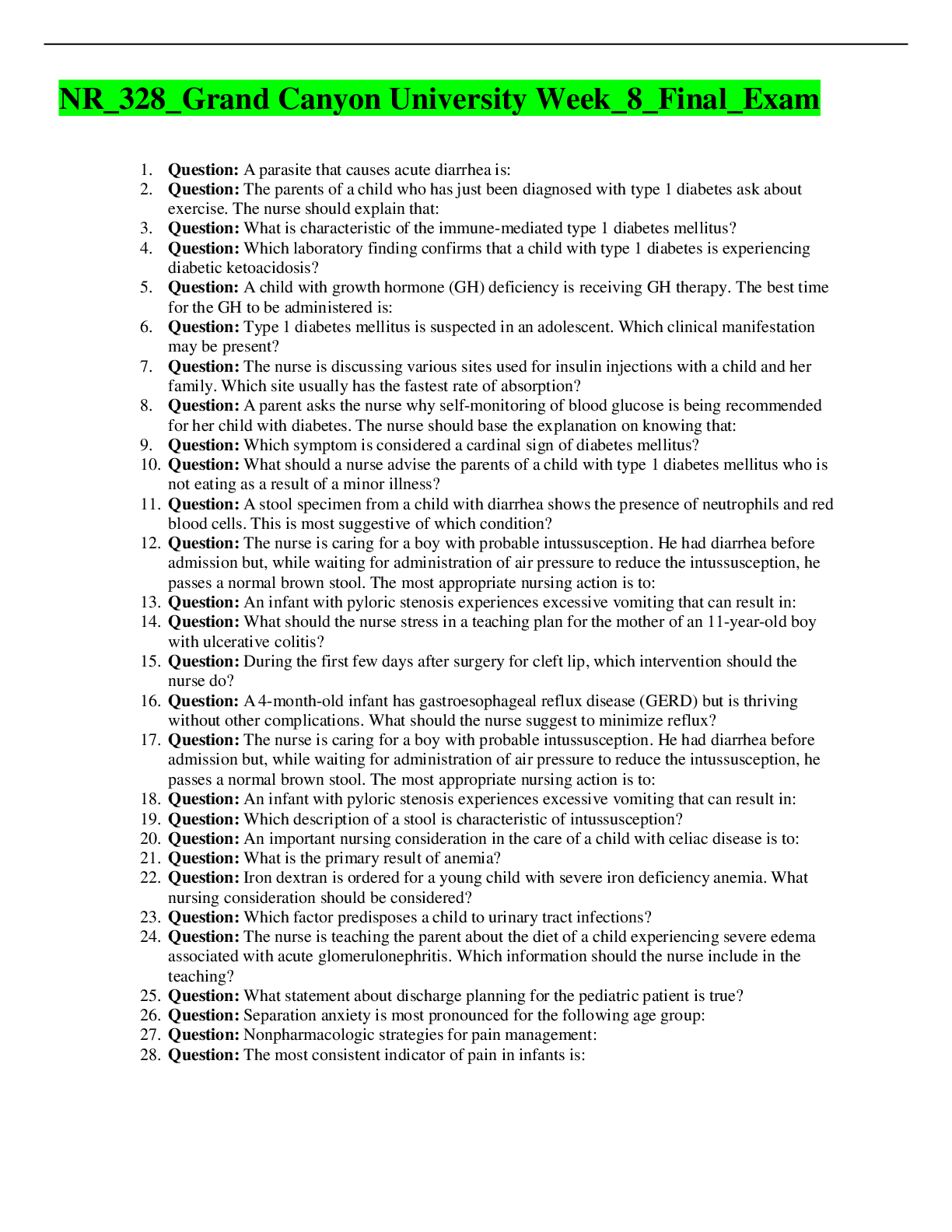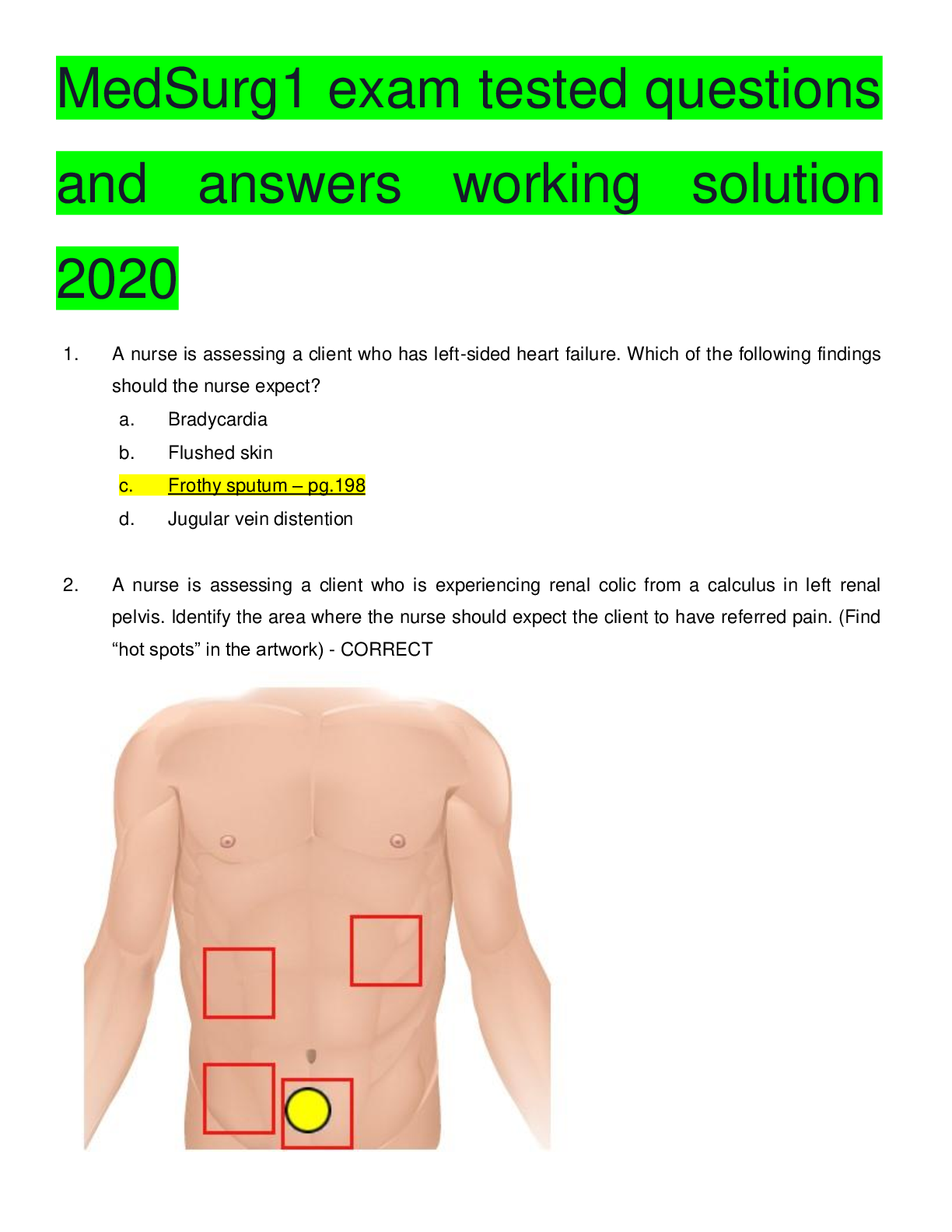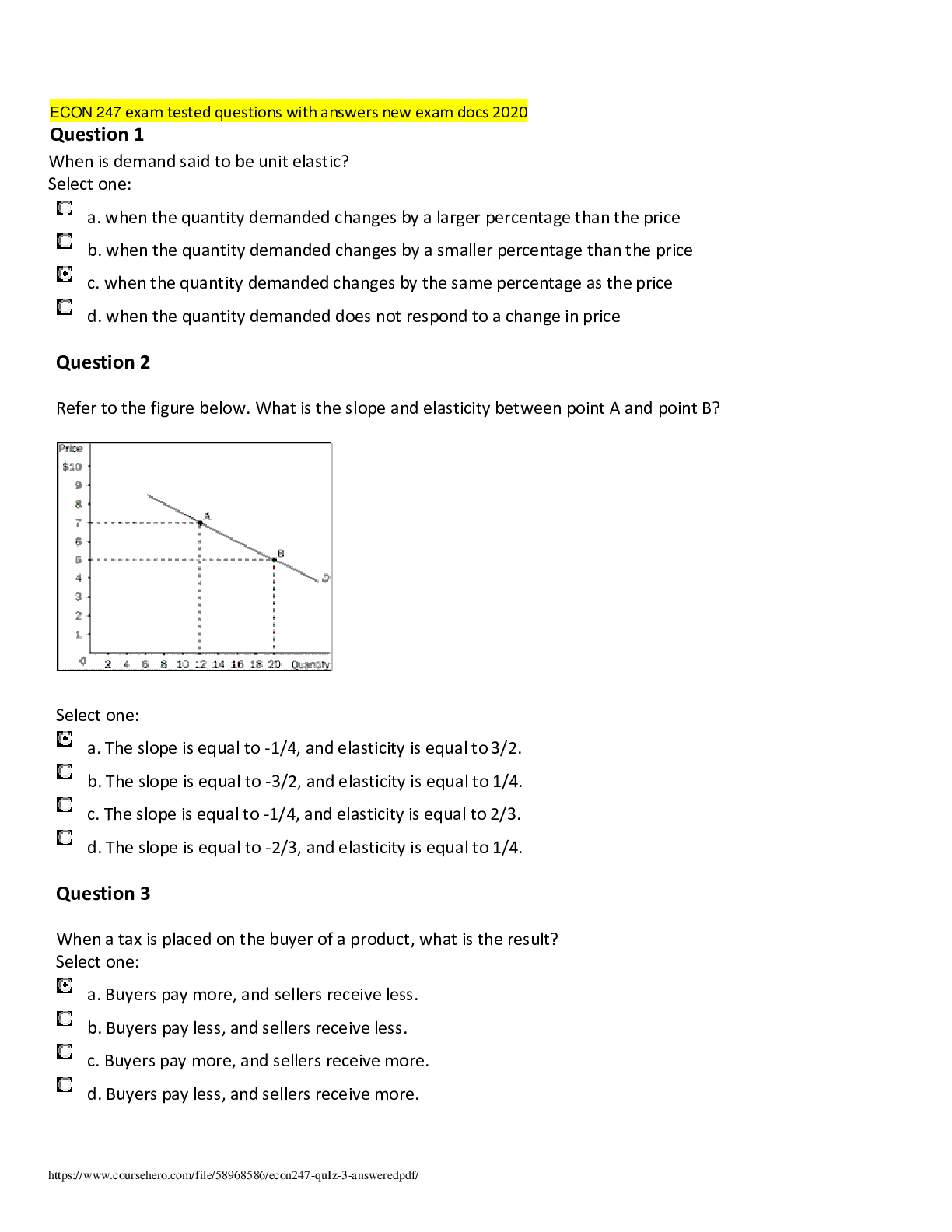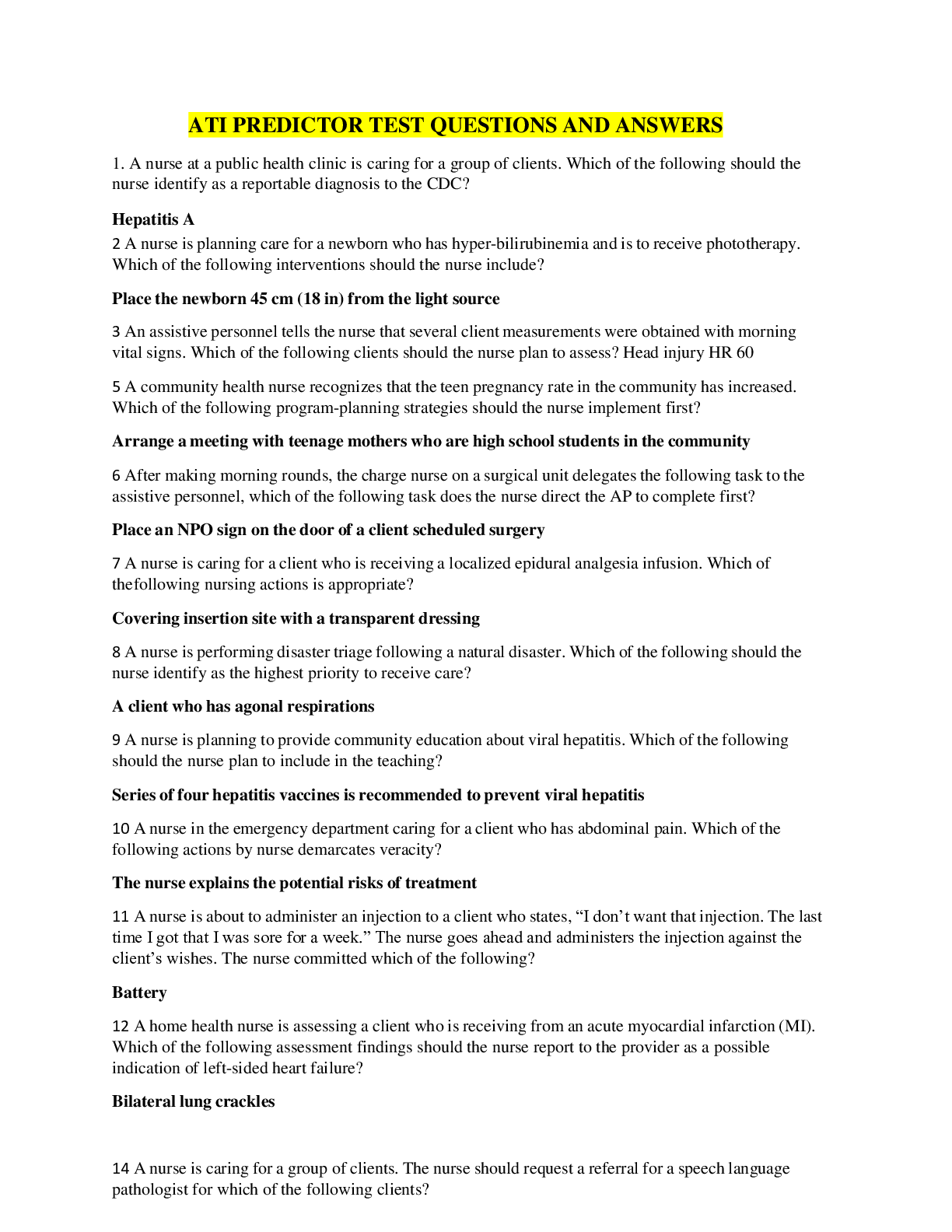Health Care > QUESTIONS & ANSWERS > PATHOPHYSIOLOGY)_ PATHO 2410 Nutrition Elimination & Sexuality (CP 4) Test Bank Exam Tested Question (All)
PATHOPHYSIOLOGY)_ PATHO 2410 Nutrition Elimination & Sexuality (CP 4) Test Bank Exam Tested Questions and Answers (Revised 2021 Exam Study Guide)
Document Content and Description Below
PATHOPHYSIOLOGY PATHO 2410 Nutrition/Elimination & Sexuality (CP #4) Test Bank Exam Tested Questions and Answers Chapter 17 1. Which of the following cells in the gastric mucosa produce intrinsic ... factor and hydrochloric acid? a. Parietal cells b. Chief cells c. Mucous cells d. Gastrin cells 2. Which of the following is the primary site for absorption of nutrients? a. Stomach b. Duodenum c. Ileum d. Ascending colon 3. When highly acidic chyme enters the duodenum, which hormone stimulates the release of pancreatic secretions that contains very high bicarbonate ion content? a. Gastrin b. Secretin c. Cholecystokinin d. Histamine 4. Which of the following breaks protein down into peptides? a. Amylase b. Peptidase c. Lactase d. Trypsin 5. In which structure is oxygenated blood (arterial) mixed with unoxygenated blood (venous) so as to support the functions of the structure? a. Pancreas b. Liver c. Small intestine d. Spleen 6. Which of the following stimulates increased peristalsis and secretions in the digestive tract? a. Sympathetic nervous system b. Vagus nerve c. Increased saliva d. Absence of food in the system 7. Which of the following is contained in pancreatic exocrine secretions? a. Bicarbonate ion b. Hydrochloric acid c. Activated digestive enzymes d. Insulin 8. The presence of food in the intestine stimulates intestinal activity but inhibits gastric activity through the: a. Defecation reflex b. Enterogastric reflex c. Vomiting reflex d. Autodigestive reflex 9. Which of the following processes is likely to occur in the body immediately after a meal? a. Lipolysis b. Ketogenesis c. Gluconeogenesis d. Glycogenesis 10. What does the term gluconeogenesis refer to? a. Breakdown of glycogen to produce glucose b. Conversion of excess glucose into glycogen for storage c. Formation of glucose from protein and fat d. Breakdown of glucose into carbon dioxide and water [Show More]
Last updated: 2 years ago
Preview 1 out of 28 pages
_ PATHO 2410 Nutrition Elimination & Sexuality (CP 4) Test Bank Exam Tested Questions and Answers (Revised 2021 Exam Study Guide).png)
Buy this document to get the full access instantly
Instant Download Access after purchase
Buy NowInstant download
We Accept:

Reviews( 0 )
$14.00
Can't find what you want? Try our AI powered Search
Document information
Connected school, study & course
About the document
Uploaded On
Jun 05, 2021
Number of pages
28
Written in
Additional information
This document has been written for:
Uploaded
Jun 05, 2021
Downloads
0
Views
117
 Test Bank Exam Tested Questions and Answers (Revised 2021 Exam Study Guide).png)


 Questions and Answers (latest Update), All Correct, Download to Score A.png)






, (A Grade), Questions and Answers, All Correct Study Guide, Download to Score A.png)
, Questions and Answers, All Correct Study Guide, Download to Score A.png)
, Latest Questions and Answers with Explanations, All Correct Study Guide, Download to Score A.png)




 Test Bank Exam Tested Questions and Answers (Revised 2021 Exam Study Guide).png)
 Test Bank Exam Tested Questions and Answers (Revised 2021 Exam Study Guide).png)
 Test Bank Exam Tested Questions and Answers (Revised 2021 Exam Study Guide).png)
 EXAM TESTED QUESTIONS WITH ANSWERS AND EXPLANATIONS GRADED A.png)

